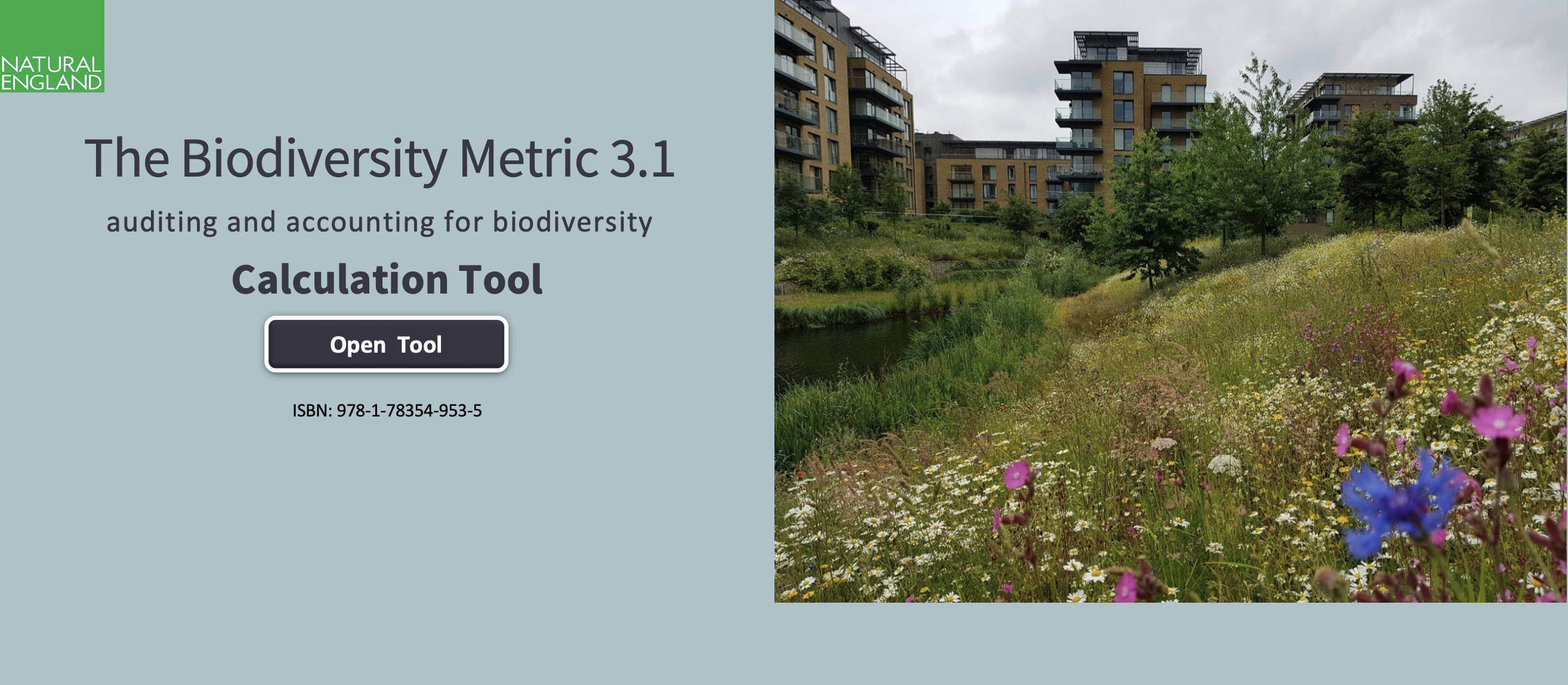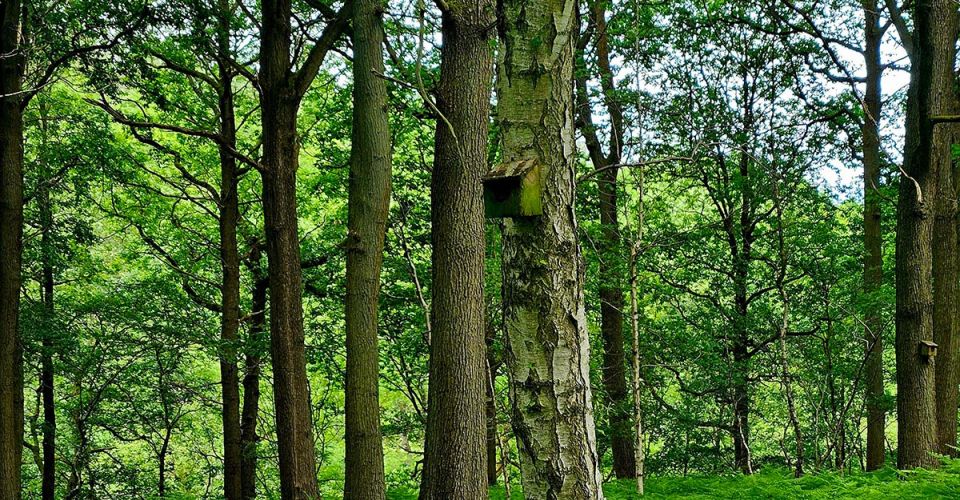How to undertake a Biodiversity Metric Calculation – the workings of the metric

So you may have been advised that a Biodiversity Metric Calculation is required for your planning application. This process is almost entirely undertaken by ecologists, so it is not uncommon for developers, planning consultants and homeowners to lack understanding of the inner workings of the metric.
How does it work?
Process Summary
Biodiversity Net Gain forms part of the Environment Act 2021, which seeks to promote measurable improvements to habitats post development for a period of at least 30 years. November 2023 is the predicted date for 10% gain in biodiversity to become mandatory, however some councils already request biodiversity net gain (although 10% is not always specified).
Biodiversity value is measured using a calculation metric tool. The standard metric was created by the Department for Environment, Food and Rural Affairs (DEFRA) with the involvement of Natural England, Natural Resources Wales, the Environment Agency and Forestry England. The current version is DEFRA 3.1, new versions are released periodically with the aim of improving the process and correcting any reported issues.

Put simply, the calculator tool works by comparing the condition and extent of habitats on site pre and post development. Habitats are scored using several factors which allow for direct comparison, to ensure that the environment is left in a better state following the development. Habitats such as buildings and hardstanding produce a low score in the calculator as they provide very few resources for wildlife, whereas natural habitats such as woodland, species-rich grasslands and heathland can produce high scores. Therefore, the removal of valuable natural habitats will present issues when trying to achieve net gain.
Habitats are entered into the calculator tool using standard UKHAB categorisation. The size of the habitat, condition, strategic significance and area of habitat being lost, retained or enhanced is entered. Habitat condition is established using habitat condition assessment sheets provided by DEFRA alongside professional judgement by the ecologist. A habitat unit score is then automatically assigned to each type of habitat, and once the metric has been completed a final unit and percentage score is provided.
What does an ecologist need to undertake the calculation?
UKhabs map with Biodiversity Net Gain plans
In order to complete a metric calculation the ecologist will require landscape plans, demonstrating clearly the habitats that will be present on site after the proposed development. They will use the plans, coupled with data gathered during a site survey, to establish the size and condition of each habitat pre and post development.
If involved from an early stage of planning application preparation the ecologist can use initial calculations to advise on methods of maximising biodiversity on site. This might include reducing the loss of valuable habitat and enhancing retained habitats.
Finer details to consider
Each habitat within the metric is automatically assigned a distinctiveness category ranging from very low to very high. This relates to the general value of the habitat, for example buildings have very low distinctiveness and certain valuable woodland types have very high distinctiveness. Each distinctiveness category (as well as condition and strategic significance) produces a multiplier within the metric which greatly influences the final score. Strategic significance relates to whether the habitat location is identified within local development strategy as an area requiring protection, or an area where development is desirable.

Trading rules are an important element of the metric. These rules dictate the type of habitats that can be used to replace existing habitats that are proposed for removal. No trading rules apply to very low distinctiveness habitats such as buildings and hardstanding, low distinctiveness habitats (such as well managed lawns) require replacement with habitats of the same distinctiveness or better. Medium distinctiveness habitats such as neutral grasslands require replacement with habitats of the same broad type or with any habitat of higher distinctiveness. High distinctiveness habitats (such as lowland woodland and heathland) require replacement with the same habitat and very high distinctiveness habitats such as peat bogs and other irreplaceable habitats require bespoke compensation. These rules prevent the replacement of high value habitats with low value habitats. For example, it would not be possible to replace woodland with a well-managed lawn.
Habitats, rivers and hedgerows are all valued as separate units within the calculator. Therefore, creation of hedgerows on site will not influence the habitat score on site; 10% net gain will be required for each unit type individually. If there are no hedgerows or rivers on site pre-development, they do not need to be considered within the calculator.
The condition assigned to proposed habitats is the predicted condition 30 years post development, therefore care must be taken to avoid overestimation. A habitat management plan is usually required to prescribe how habitats will be managed to achieve their target condition. If in future years a habitat has not been managed in the way described in the planning application, further works and expense may be required to restore the habitat to the original proposed condition.
It is always better to conserve and enhance existing habitats rather than replace them elsewhere as this will produce a higher score within the metric. A lower score for new habitats is due to the time taken for them to establish, an existing woodland is more valuable to wildlife than a newly planted woodland which will not instantly provide food, shelter and nesting opportunities.
What if my site has a loss in biodiversity?
The mitigation hierarchy states that avoidance of negative impacts should be the first consideration when developing sites. If a loss in biodiversity cannot be avoided on site, mitigation and compensation can be considered. This can involve creating or enhancing habitats within other land under the same ownership. The offsite habitats will be under the same rules within the metric as onsite habitats.
If offsite habitat creation is not possible, financial compensation may be considered. Some Councils have a system in place for this and will charge a fee which contributes towards habitat creation and enhancement in the local area. Alternatively, there are companies such as Civity which provide this service. As biodiversity net gain becomes an important consideration for development nationwide, the trading of habitat units is becoming more common. This involves the buying and selling of habitat units between developers and landowners to assist with achieving biodiversity net gain.
What if my site delivers significant net gains?
If your development is likely to achieve in excess of 10% gain, depending on the scheme and Local Authority, it may be possible to ‘bank’ the additional habitat units to deliver biodiversity offsetting for other development sites. This will need to be made clear within your planning application with the appropriate legal agreements put in place.
Should you need any more guidance on biodiversity offsetting, please contact us. Our knowledgeable team of ecology experts would be happy to help. You may also find more advice and insight into other ecology services in our blog.





